#soviet union stamps
Text

#philately#postage stamp#ephemera#vintage stamps#vintage#stamp collecting#soviet union#soviet union stamps#space#space stamps#outer space#spacecraft#astronaut#cosmonaut
5 notes
·
View notes
Text

Soviet stamp of the Hopak - Ukraine's national dance. 1971.
#vintage#ukraine#ukrainian history#ukrainian culture#hopak#1970s#vintage stamps#1971#soviet union#ussr#folk dance#slavic#eastern europe
83 notes
·
View notes
Text


i love the miscellaneous Soviet economics books that are inexplicably in our library. “Five Day Work Week and Free Time for Workers” surrounded by books about executive compensation, outsourcing, and entrepreneurship..
40 notes
·
View notes
Text

No, megint egy elsőzés, szovjet bélyeg sem szerepelt még itt, hát ez is eljött! A bélyeg ráadásul egyidős apukámmal, 62 éves már! A képről nem jön le talán annyira, de kifejezetten apró darabról van szó, kb 3 centis. Egy alapvetően 8 tagú sorozat egyik duplikált tagja - két színverzió létezik belőle, ez meg egy élénk piros. A bélyegeken menő vagy fontos szovjet dolgok vannak teljesen vegyesen, így sorban:
1 kopejka - Munkás tartja a béke zászlaját (nohát, nohát...)
2 kopejka - Arató kombájn, silóval
3 kopejka - Űrrakéták
4 kopejka - Szovjet címer és zászló, ez a másik ami két színben is létezett
6 kopejka - A Szpasszkaja torony, háttérben a Kremlel
10 kopejka - Munkások emlékmű
12 kopejka - Minin és Pozharsky, háttérben a Szpasszkaja torony
16 kopejka - Repülőgép egy erőmű felett

A használtak elég kis olcsóak, komplett sorozat, 3-400 forintért kapható, viszont egy postatiszta teljes sorozat az ismétlődések nélkül is 2-3000 forint.
A Szpasszkaja torony egyébként a Kreml leghíresebb kapubástyája, mely 1491-ben épült, a meghatározó gótikus harangtornyot 1624-ben építették rá, amiben 1852-ben helyezték el az óraszerkezetet. 1937-ben került a csúcsára a vörös csillag, ettől eltekintve az óra behelyezése óta változatlan a kinézete. A torony harangjátéka, az orosz himnusz dallamát játssza.

17 notes
·
View notes
Text

file: The Soviet Union 1969 CPA 3764 stamp (Rocket on Laser Beam, and Moon) cancelled.jpg
4 notes
·
View notes
Text

Udmurt Autonomous Soviet Socialist Republic, USSR, 1970
6 notes
·
View notes
Text

I always wondered what the texture of those little jelly things on the windows of doctors offices and cafeterias feels like
#stamp collecting#postage stamps#doko demo issyo#stamp#soviet union#toro inoue#austria hungary#marinelife#madoka magika#lucky star#foggymorning#foggy day#crystal castles#skins uk
9 notes
·
View notes
Text




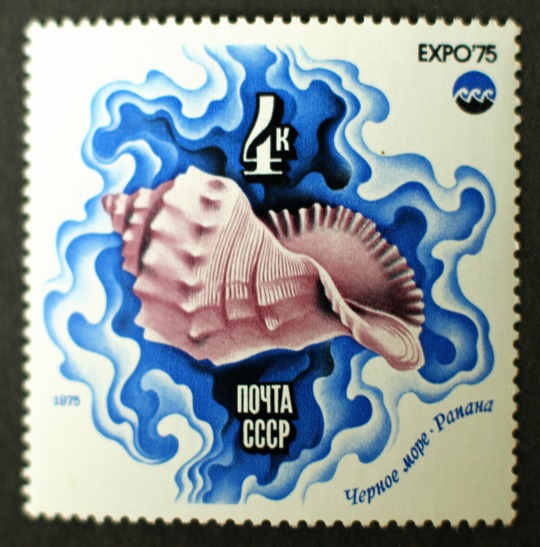



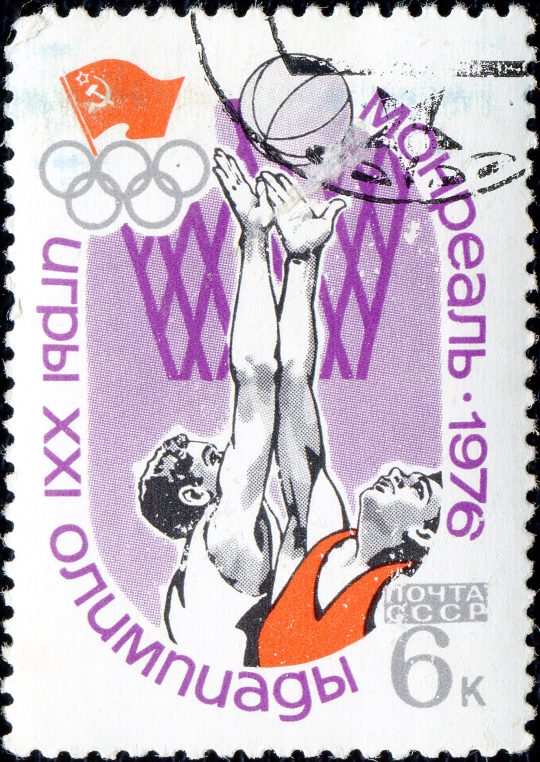
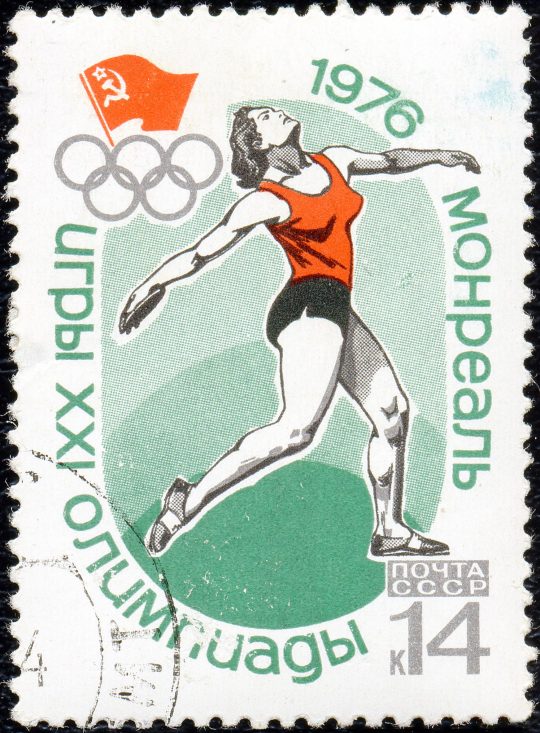


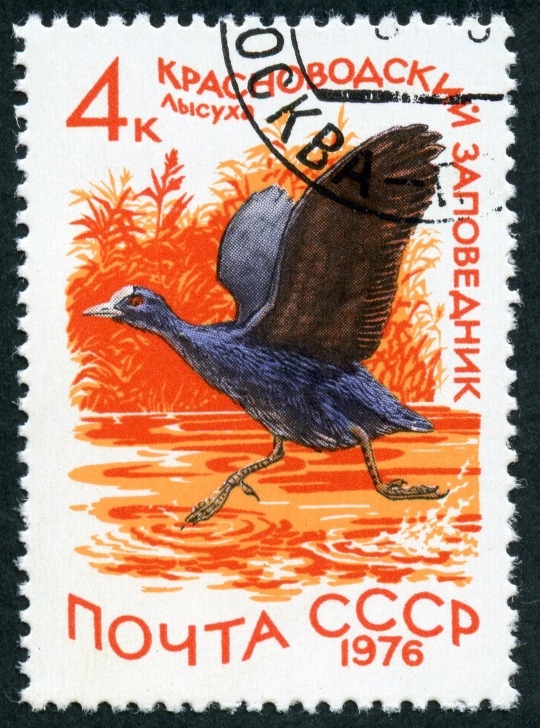

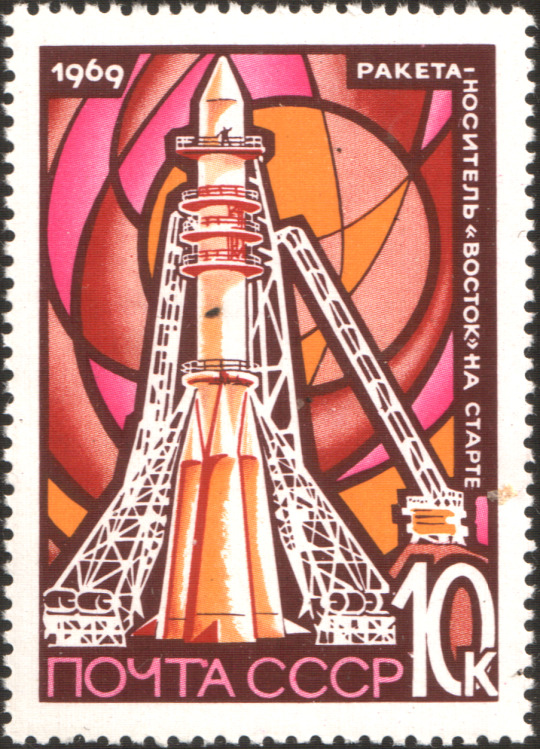



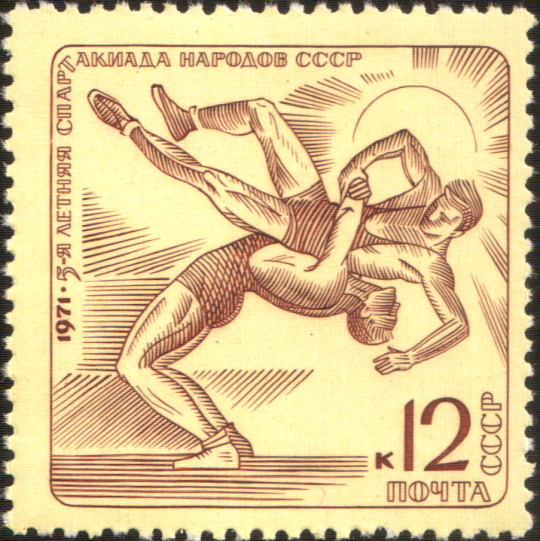


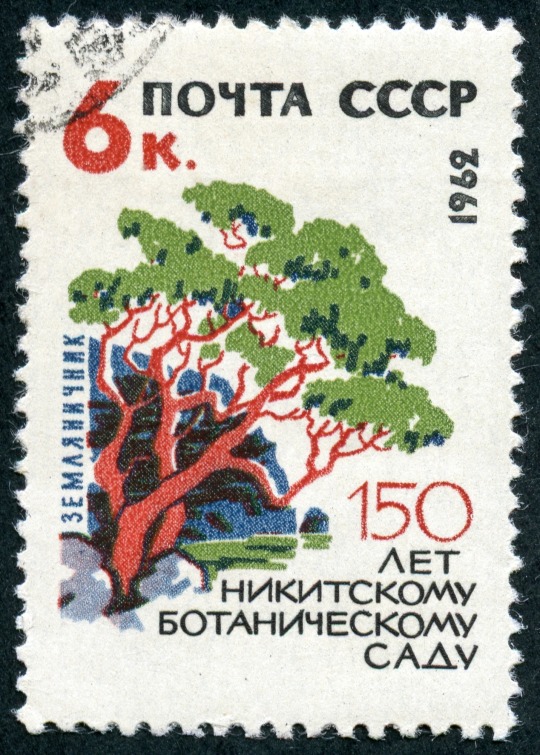





soviet stamps (public domain)
5 notes
·
View notes
Text
Best News of Last Week - December 11
1. Biden administration to forgive $4.8 billion in student loan debt for 80,300 borrowers

The Biden administration announced on Wednesday that it would forgive an additional $4.8 billion in student loan debt, for 80,300 borrowers.
The relief is a result of the U.S. Department of Education’s fixes to its income-driven repayment plans and Public Service Loan Forgiveness program.
2. Detroit on pace to have lowest homicide rate in 60 years this year
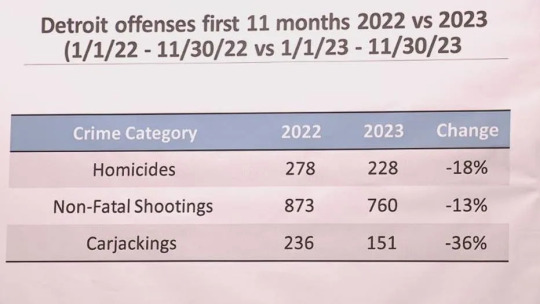
A partnership to reduce Detroit crime is being praised with the City on pace for the fewest homicides in 60 years.
"This is the day we’ve been waiting for, for a long time," said Mayor Mike Duggan. The coalition which includes city and county leaders that Detroit Police Chief James White formed in late 2021 to return the criminal justice system in Detroit and Wayne County to pre-Covid operations.
3. Dog that killed 8 coyotes to protect sheep running for Farm Dog of the Year

Over a year ago, Casper was stacked up against a pack of 11 coyotes, and he overcame them all to protect the livestock at his Decatur home. Now he needs your help.
Casper, the Great Pyrenees livestock guardian dog, needs the public to vote for him to become the American Farm Bureau's "Farm Dog of the Year: People's Choice Pup" contest.
4. Shimmering golden mole thought extinct photographed and filmed over 80 years after last sighting

De Winton's golden mole, last sighted in 1937, has been found alive swimming through sand dunes in South Africa after an extensive search for the elusive species.
5. About 40% of the world's power generation is now renewable

The International Renewable Energy Agency (IRENA) and World Meteorological Organization (WMO) have released their first joint report to strengthen understanding of renewable energy resources and their intricate relationship with climate variability and change.
In 2022 alone, 83% of new capacity was renewable, with solar and wind accounting for most additions. Today, some 40% of power generation globally is renewable, due to rapid deployment in the past decade, according to the report.
6. Jonathan the Tortoise: World’s oldest living land animal celebrates 191st birthday
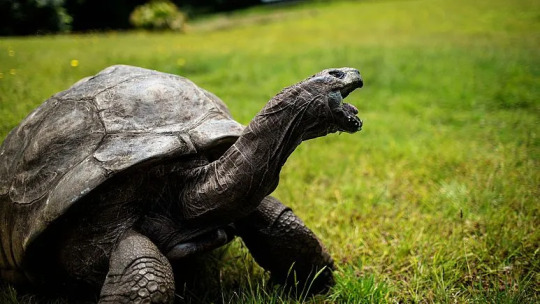
The world’s oldest living land animal - a Seychelles giant tortoise named Jonathan - has just celebrated his 191st birthday. Jonathan’s estimated 1832 birth year predates the invention of the postal stamp, the telephone, and the photograph.
The iconic creature lived through the US civil war, most of the reign of Queen Victoria, the rise and fall of the Soviet Union, and two world wars.
7. New enzyme allows CRISPR technologies to accurately target almost all human genes

A team of engineers at Duke University have developed a method to broaden the reach of CRISPR technologies. While the original CRISPR system could only target 12.5% of the human genome, the new method expands access to nearly every gene to potentially target and treat a broader range of diseases through genome engineering.
---
That's it for this week :)
This newsletter will always be free. If you liked this post you can support me with a small kofi donation here:
Buy me a coffee ❤️
Also don’t forget to reblog this post with your friends.
906 notes
·
View notes
Text
So uh… to the “pro-Palestine” crowd
- harassing random jews on the streets (and online) isn’t going to help Palestinians
- swarming and blockading college campus buildings (and hospitals) and chanting genocidal slogans at jews isn’t going to help Palestinians
- defacing synagogues and jewish owned stores isn’t going to help Palestinians
- displaying antisemitic signs and waving nazi flags isn’t going to help Palestinians
- chanting for intifada isn’t going to help Palestinians (Hamas would love that though)
- spreading Hamas propaganda isn’t going to help Palestinians
This doesn’t help Palestinians- but it sure does help Hamas who’s goal is to wipe out Israel and all jews. Also Hamas could care less for Palestinians- why do you think they are being used as human shields???
Doing all of these things makes you antisemitic (some of y’all were probably already antisemitic, and is using the I/P conflict to go fully unmasked). You doing this is causing harm to so many people. And to be honest- doing this shit shows that you actually don’t care for Palestine. In fact you are using this conflict to go fully unmask and be raging antisemitic little asshats.
Instead of doing something that could help those who are affected by this war, you are harassing jews, defacing synagogues, and calling for intifadas. Why is that? (I know the answer- but humor me). Why is this acceptable? How does harassing and harming jews help Palestine? And how does supporting Hamas (a terrorist organization) help Palestine?
Also I may get hate for this but I don’t care: anti Zionism is antisemitism. The term anti Zionist was created during the soviet era by one of the soviet leaders. The Soviet Union hated jews and wanted to stamp them all out. One of the ways that they “succeeded” was “persuading” jews that their culture and religion was dirty. That they- the jews should be ashamed of their “Jewishness”. And that was how anti Zionism came to be.
I said what I said. If you don’t like it then maybe you have some thinking to do.
Also as another fucking reminder:
Stop fucking spreading vile antisemitic shit (and stop harassing Israel citizens) !!! This includes:
- blood libels
- organs harvesting
- holocaust denial
- “hitler was right”
- “gas the jews”
- lizard people
- “jews are rats”
- “jews are rich”
- “jews control the media”
- “jews are landlords”
- the majority of conspiracy theories
- Zionist occupied government
- Zionism is racism
- stop fucking reading protocols of the elders of Zion
- “from the river to the sea…” is a genocidal chant.
- stop calling Israel a “terrorist” state and stop saying that all Israelis are terrorist (people are not their fucking government)
(Just to list a few)
I said what I said and if you don’t like it- the doors over there.
Am yisrael chai! ✡️
#jumblr#antisemitism#am yisrael chai#jewish and proud#leftist antisemitism#stop harassing jews#and stop blaming jews for shit that’s not our fault#fuck antisemitism#anti Zionism = antisemitism#fuck hamas#hamas is isis#to the#pro palestine#and to the#anti Zionist#crowd#use your brains for once#I know that it may be hard but#use common sense#i said what i said#if you don’t like it#I don’t care
399 notes
·
View notes
Text

US postage stamp, 1990
"Sea Creatures"
Scott #2508 - #2511
Issued: October 3, 1990 - Baltimore, MD
Quantity: 69,566,000
Designer: Peter Cocci & Vladimir Beilin
Printed By: Bureau of Engraving and Printing (Lithographed and engraved)
This block of four was a joint issue between the U.S Postal Service and the Soviet Union’s Ministry of Posts. The issue focused worldwide attention on marine mammals inhabiting the earth’s oceans. The historic issue is an example of the U.S. and the Soviet Union working together for the world’s common good.
#stamp#mail#stamps#stamp collecting#postage#usps#stamp collection#postage stamps#philately#philatelic#snail mail#ocean#dolphin#otter#sea lion#killer whale
115 notes
·
View notes
Text
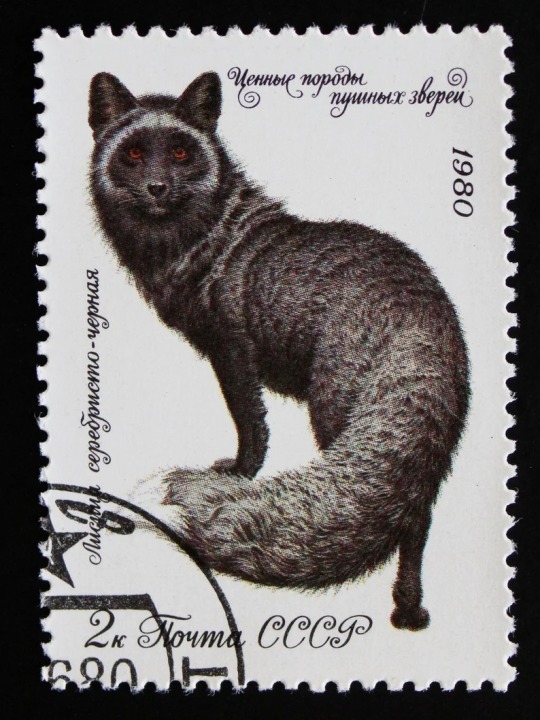
#philately#ephemera#postage stamp#vintage stamps#vintage#stamp collecting#snail mail#ussr stamps#ussr#soviet union#soviet union stamps#animals#fox#red fox#vulpes vulpes#melanistic#melanistic fox#1980
10 notes
·
View notes
Note
What would you say were good things about USSR? (If anything) I think there were many good cartoons and new years movies, as well as high quality stamps. (My unserious answer)
I am NOT immune to the unserious. Here are some things the Soviet Union did right:
There was a small apricot tree in my neighbor's back yard, and I would eat as many apricots as my tiny body could house.
In fact, all fruit was exceptionally delicious—especially the watermelon. I respect my parents' decision to emigrate except when I eat a mealy, pinkish chunk of pakast from the bottom of a fruit cup and remember how good it tasted when we bought it by the slice on the boardwalk.
We lived right by the Kanatnaya Doroga, so we could ride it to Otrada Beach in the summer.
My father lost his hat in the Black Sea, but the sea returned it a week later.
GREATEST LOVE STORY OF OUR TIME
We left before I got the chance, but I know I would have served cunt in a little pioneer outfit with a crisp red galstuk.
Swan Lake again? Joke's on you, I fucking love Swan Lake. Turn that shit up!
BABUSHKAAAAAA

#it was thanks to my babushka that i briefly mastered the art of levitation. get this. i used to fall asleep during our bus ride to her house#but when i woke up later i was always in bed. you can't explain that#toska#anonymous#assbox
49 notes
·
View notes
Text
The terrorist attack by the Islamic State on a sold-out concert on the outskirts of Moscow on Friday was the deadliest to hit Russia in almost two decades, killing at least 143 people. Yet for many, the assault on the Crocus City Hall evoked memories of the 2000s, when terrorist attacks—often with soaring death tolls—were a regular occurrence in Russia.
Russian President Vladimir Putin came to power shortly before the turn of the century, as Moscow was waging a brutal campaign to quash violent extremism and separatism in the restive North Caucasus republic of Chechnya. The war propelled Putin to prominence, and he staked his presidency on stamping out the terrorist threat. “We will pursue them everywhere,” he said in the wake of a series of apartment block bombings in 1999. “We’ll catch them in the toilet. We’ll wipe them out in the outhouse.”
Despite Putin’s bellicose rhetoric, militants from the North Caucasus continued their attacks across Russia throughout the first decade of the 21st century, bombing public transit and airplanes as well as laying siege to a Moscow theater. In one of the most violent incidents, Chechen militants seized a school in the town of Beslan, taking more than 1,000 people hostage—most of them children—over three days in 2004. The standoff ended when Russian forces stormed the school, and 334 people were killed. A European Court of Human Rights ruling later criticized Russia for failing to act on intelligence that an attack was planned for the region and for using “indiscriminate” weapons such as tank cannons in storming the school, likely driving up the death toll.
The threat began to recede in the 2010s, and the Kremlin’s preoccupation with Ukraine came to the fore. But Friday’s attack has revealed Russia’s continued vulnerability to terrorist violence. And it has resurfaced questions about the security services’—and, by extension, Putin’s—ability to protect citizens from it.
Russia’s Federal Security Service (FSB) is responsible for domestic security and intelligence. It also serves as the Kremlin’s primary intelligence service across the former Soviet Union and played a prominent role in planning the invasion of Ukraine.
“The reason the FSB didn’t see this coming is not because the FSB is incapable,” said Kevin Riehle, who spent three decades working in U.S. intelligence and is the author of a new book on the history of the FSB. “The reason is that they’re looking elsewhere.”
As the Kremlin has steadily cracked down on dissent and civil society over the past decade, the FSB’s remit has ballooned. Russian courts have branded more than 14,000 people and entities as extremist, including opposition movements; Jehovah’s Witnesses; Facebook’s parent company, Meta; and, most recently, the “LGBT movement,” putting the organizations on par with groups such as al Qaeda. And it’s the FSB’s job to keep tabs on all of them.
This expansive workload has likely stretched the agency’s resources, said Andrei Soldatov, a Russian journalist and an expert on the security services. It also speaks to the FSB’s long-standing role in monitoring not only conventional security threats but also perceived challenges to Russia’s leadership. “The demand that the FSB be loyal to no one but the president has been in existence since before Putin came along as president,” Riehle said. “That was the demand of [former President Boris] Yeltsin in the 1990s.”
Politicization of the security services can also impede their ability to report unflattering or inconvenient truths to senior officials.
The United States sought to warn Russia about intelligence it had of a planned attack in Moscow targeting large gatherings, including concerts, according to a statement issued by the White House in the wake of the attack on Friday. Three days before the attack, Putin publicly dismissed Western warnings as “blackmail” and an effort to destabilize the country.
“Think about an officer of the FSB who got this warning and now it’s his job to pass it on to his superiors,” Soldatov said. “First of all, he would be thinking about his own safety, that he would not be accused of being a traitor or too close to the Americans.”
In the wake of the 9/11 attacks, Putin was the first world leader to call U.S. President George W. Bush to offer his condolences, pitching Russia and its fight in Chechnya as part of the wider war on terrorism. But former CIA officers note that cooperation on counterterrorism between Russia and the United States has always been poor and riven with suspicion. Douglas London, a retired CIA senior operations officer, recalled in an interview that Russian officials would accuse the United States of inventing the Islamic State during meetings.
Experts and former U.S. intelligence officials described the FSB as a blunt-force instrument that has had its uses for the Kremlin over the years but may have impeded it when it came to the more delicate aspects of intelligence gathering and counterterrorism efforts. “The idea of patiently cultivating insiders and agents is not how they go,” London said.
Now, having failed to stop Friday’s brazen attack, some in Russia are openly questioning Putin’s vast security apparatus. “What happened is unique in that for the first time in Russia, during a terror attack of this scale, security forces were unable to prevent the terrorists’ action in any way: they freely entered the building, killed and wounded scores of people, and calmly left the scene of the massacre,” political analyst Vladislav Inozemtsev wrote in a commentary. “Years of tightening security and trillions of rubles were spent in vain.”
Maria Pevchikh, an associate of the late opposition figure Alexei Navalny, accused the security agencies of being “too busy fighting politicians, activists, and journalists, so they didn’t have time left to deal with terrorists.”
U.S. officials have attributed the attack to a branch of the Islamic State based in Afghanistan, known as the Islamic State-Khorasan, which claimed responsibility and released video purportedly taken during the assault by one of the alleged perpetrators. The Sunni group’s propaganda arm has set its sights on Russia in recent years due to the Kremlin’s deepening ties with Shiite Iran as well as Moscow’s role in the Syrian civil war, pounding Sunni enclaves with airstrikes as Russia came to the aid of President Bashar al-Assad. The Assad family is Alawite, an offshoot of Shiism.
The Islamic State “perceives Russia as the vanguard of Shia Islam at this point,” Colin P. Clarke, the director of research at the Soufan Group, said during an FP Live event on Tuesday. “The Russians have also been accused of spilling a lot of Muslim blood going all the way back to the Soviet invasion of Afghanistan, from 1979 to 1989, and then the brutal wars in the North Caucasus.”
Russia is “extremely vulnerable” to further attacks by the group, said London, the retired CIA officer. Four men charged with carrying out Friday’s attack are Tajik citizens, according to Russian state media. Tajikistan shares a lengthy border with Afghanistan, and the Islamic State has sought to recruit militants from local extremist groups in the country as well as in other Central Asian countries.
Citizens of Tajikistan can travel to and stay in Russia visa-free for up to 90 days, and the country is host to a large diaspora of some 1.3 million Tajiks. Many are now bracing for a backlash from both the authorities and Russian citizens in the wake of Friday’s attack.
“The FSB is not going to handle this with more finesse than it handled those early 2000s attacks. And it’s going to create some frightened and angry people who will be vulnerable to recruitment,” Riehle said. “It will make things worse.”
10 notes
·
View notes
Text
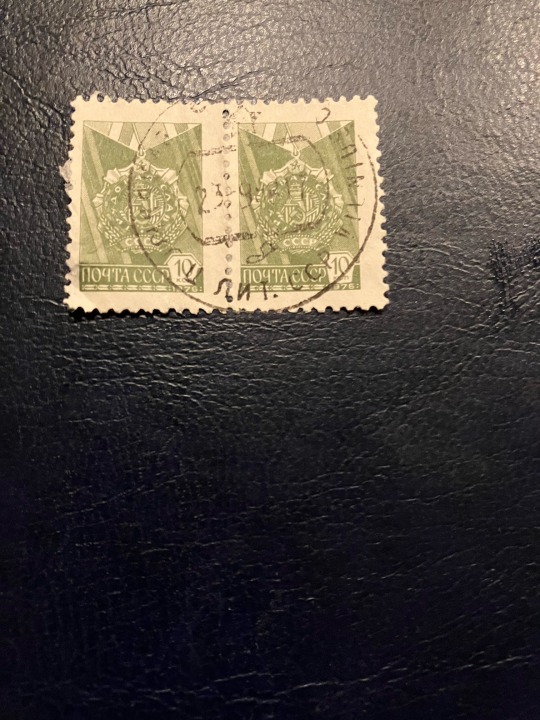
Volt már ilyesmi kis picike szovjet bélyegünk itt régebben 15 évvel korábbról, ez a menő és fontos szovjet dolgok sorozatának '76-os verziójának tagja. A fent látható 10 kopejkáson valamiféle szovjet katonai kitüntetés látható, sajnos nem igazán sikerült ráakadni pontosan mi lehet. A sorozat egyébként elég nagy, nyolc plusz négy, összesen tizenkét tagú, az alsó nyolc névérték ilyen picike, a legmagasabb négy nagyobb téglalap méretű. Az értékek egy kopejkától egy rubelig terjednek, vegyesen találhatóak rajta kitüntetések, címerek, jelképek, és persze ikonikus személyek mint Marx vagy Lenin. A nyolc kisbélyeget 9-9 millió példányban nyomták, a négy nagyobbat pedig fajtánként 3,5 millióban, ezek egyébként szovjet tekintetben nem számítanak brutális kiadási számoknak, de nyilván azért a ritkaságtól jó messze állnak.
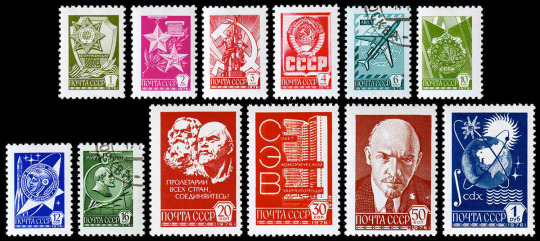
A kis bélyegek használtan marginális értéket képviselnek, postatisztán azért érnek névértéktől függően egy-kétszáz forintot. A nagyok már izgibbek, ott a tiszták többszáz, a Lenin meg az egy kopejkás űrcucc, simán már ezer-kétezerért megy. Teljes tizenkettes sorozatot állapottól függően kétezer és ötezer forint között lehet venni.
5 notes
·
View notes
Text
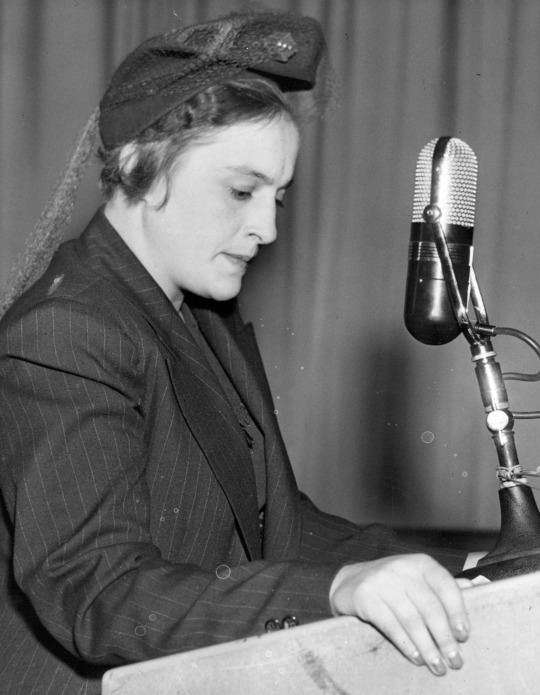
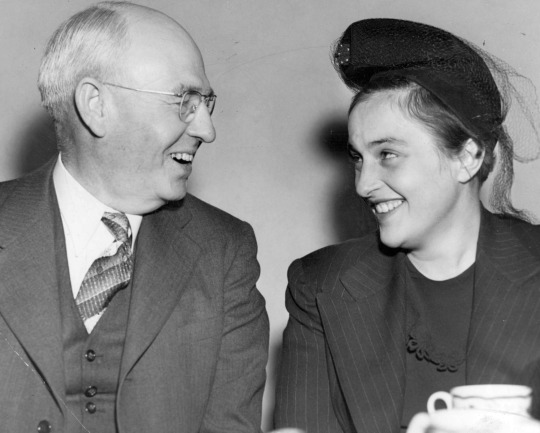
Lady Death Visits Minneapolis
In September 1942, 26-year-old Soviet sniper Lyudmila Pavlichenko visited Minneapolis with three other European war heroes for a three-day tour of the Twin Cities to help sell war bonds and stamps. Pavlichenko, known to her enemies as “Lady Death” and often called “Girl Sniper” by the press, was one of 2,000 female snipers in the Red Army during World War II, of which only 500 survived. She had a kill count of 309, a record for a female sniper to this day. Her United States and Canada tour, which began after a shrapnel injury took her out of combat, was part of the Soviet Union's attempts to convince the other Allies of World War II to open a second front against Nazi Germany. Following the war, she worked as a research assistant at Soviet Navy headquarters. She died from a stroke in 1974 at the age of 58.
"Clean cut in appearance and straightforward, she can't quite conceive why all the fuss is being made over her." In Russia, she explained, all women are fighting. Minneapolis Star, September 28, 1942.
Read her memoirs or learn more about her in the 2015 Russian film, Battle for Sevastopol.
Photos of Lyudmila Pavlichenko during her visit to the University of Minnesota in September 1942, from the Minneapolis Newspaper Photograph Collection in the Hennepin County Library Digital Collections.
#lyudmila pavlichenko#snipers#female snipers#women in WWII#Red Army#Soviet Union#World War II#WWII#Minneapolis#Minnesota
76 notes
·
View notes